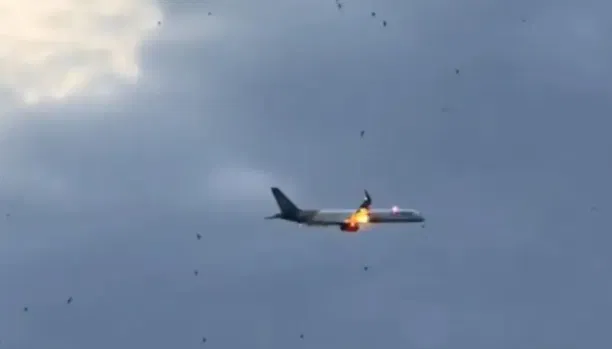As I write this, I can still feel the adrenaline coursing through my veins. The thought of witnessing flames erupting from an airplane engine mere moments before it made an emergency landing sends shivers down my spine. For passengers on board Condor flight DE3665 from Corfu to Düsseldorf, what was supposed to be a routine journey turned into a nerve-wracking ordeal that tested their composure.
According to eyewitnesses and passengers, sparks and flames were visible coming from the engine just before the pilots made the drastic decision to divert the plane to Brindisi Airport in Italy. The sudden loss of power and the precision with which the aircraft descended led many to wonder if this incident was more than an ordinary malfunction.
One passenger recalled sending “goodbye” messages to loved ones, fearing the worst as the plane plummeted towards the runway. Another described the situation as “incredibly frightening,” adding that they thought it was all over.
Video footage shows the plane descending with what appears to be flames coming from the engine, accompanied by loud booms as it neared the runway. Thankfully, Condor later clarified that the engine itself was not on fire, and the diversion was purely precautionary, ensuring passenger safety at no point in jeopardy.
After a brief stopover in Brindisi, passengers were flown to Düsseldorf the following day on a replacement aircraft. While some travelers were forced to find alternative accommodations due to limited hotel capacity, Condor provided vouchers, blankets, and access to airport shops for essentials. The airline also offered reimbursement for expenses incurred during the unexpected layover.
As the Boeing 757 undergoes a comprehensive technical inspection to ensure its full operational status, the emotional impact of this incident will undoubtedly linger with passengers long after it’s over. It serves as a stark reminder of the unpredictable nature of aviation emergencies and the importance of strict safety protocols and professionalism in handling crises at high altitudes.
